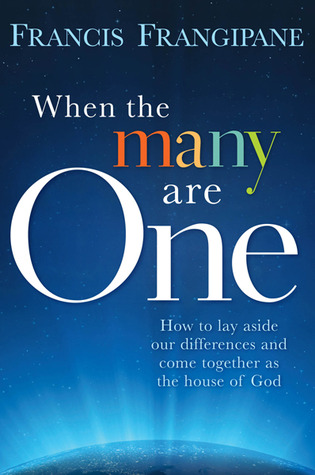When The Many Are One: How to Lay Aside our Differences and Come Together as the House of God
by Francis Frangipane
How the Christian community--driven by grace, unified in love, and activated by prayer--can bring revival and change the world.How the Christian community--driven by grace, unified in love, and activated by prayer--can bring revival and change the world.
We all want to be part of something bigger than ourselves. We all want to live in communities that are healthy and safe. In When the Many Are One When the Many Are One (formerly The House of the LordThe House of the Lord), Francis Frangipane demonstrates how Christians of every color, culture, and denomination can work together to transform our communities.
Our best efforts will not stop the flood of problems in our cities if we remain isolated from each other. In a season when external forces are causing disunity and division, Francis Frangipane calls us back to oneness with Christ, and through Him oneness with other Christians. With the character and power of Christ in our midst, the Church can again bring transformation to our communities, our nation, and our world.
We all want to be part of something bigger than ourselves. We all want to live in communities that are healthy and safe. In When the Many Are One When the Many Are One (formerly The House of the LordThe House of the Lord), Francis Frangipane demonstrates how Christians of every color, culture, and denomination can work together to transform our communities.
Our best efforts will not stop the flood of problems in our cities if we remain isolated from each other. In a season when external forces are causing disunity and division, Francis Frangipane calls us back to oneness with Christ, and through Him oneness with other Christians. With the character and power of Christ in our midst, the Church can again bring transformation to our communities, our nation, and our world.
Paperback, 224 pages
Published May 18th 2009 by Charisma House (first published 2009)
© 2025 Bibleportal.com 版权所有.

Francis Frangipane is a Christian evangelical minister and author. He is the founding pastor of River of Life Ministries in Cedar Rapids, Iowa, United States. In 2002, he also launched an international, online school called In Christ's Image Training (ICIT). This training lays a foundation of truth based on four principal themes: Christlikeness, humility, prayer and unity. ICIT has students in over seventy nations. Additionally, over the past decades, Frangipane has served on a number of other ministry boards. However, in recent years he has gradually resigned from these various boards. As of June 2009, he has also retired from his position as senior pastor of River of Life Ministries. In this more simplified life, Frangipane is devoting himself to prayer and the ministry of God's word.
Francis Frangipane has an active partnership with the Mission America Coalition, consisting of leaders from 81 denominations and over 400 ministries and networks. He is also a welcomed teacher in various Charismatic and Evangelical church settings, in both the black and white communities.
... Show more